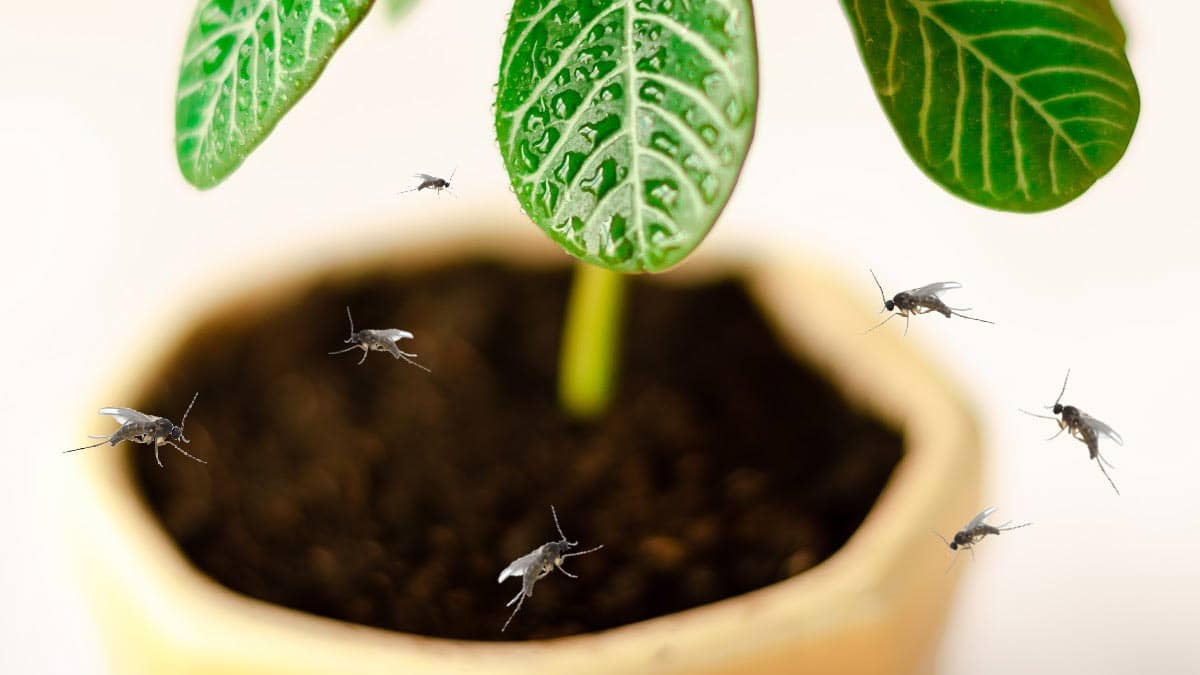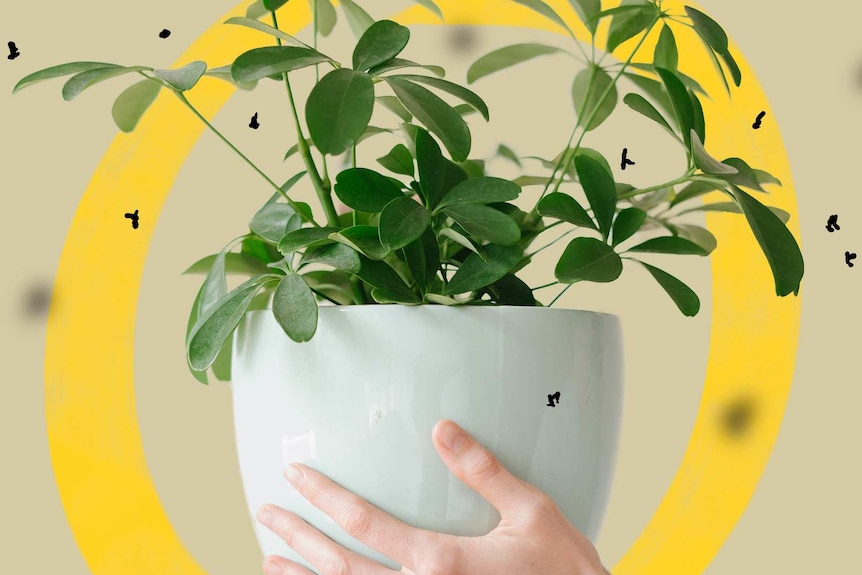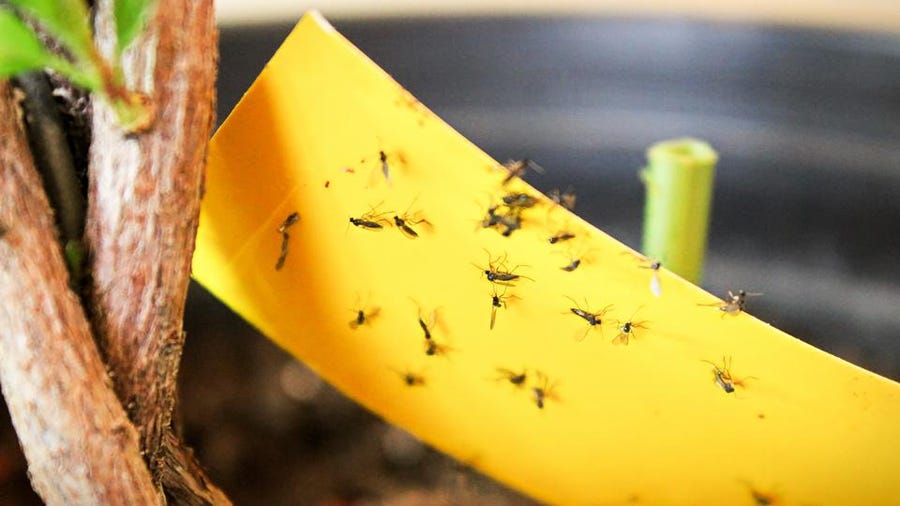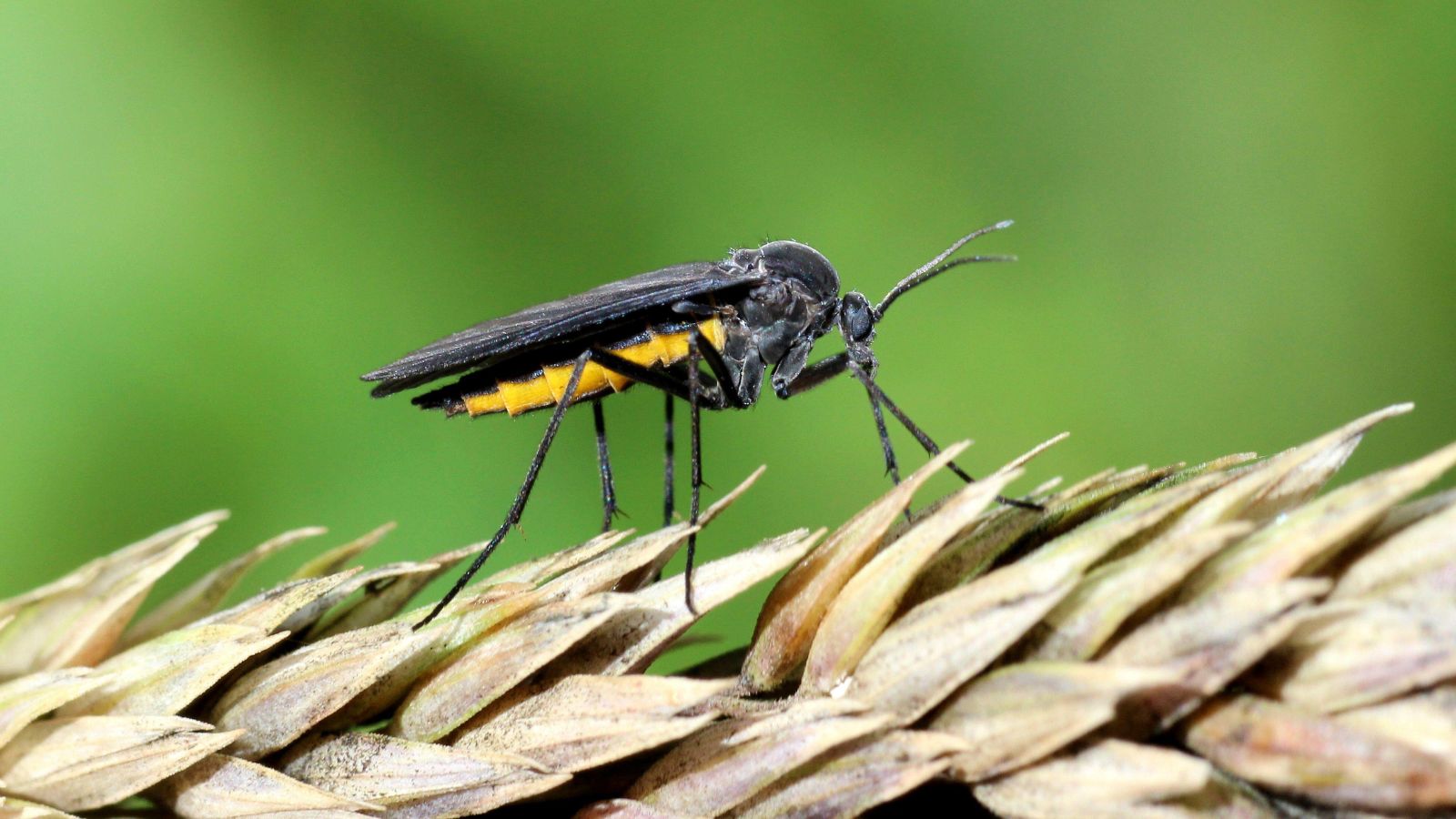How To Prevent and Remove Fungus Gnat From Your Grow Room
Dealing with fungus gnats in your grow room can be a frustrating and persistent problem. These tiny flying insects can quickly multiply and cause damage to your plants' roots, hindering their growth and overall health. However, there are effective methods to prevent and remove fungus gnats from your grow room.
What Are Fungus Gnat?
Fungus gnats are dark, winged insects that can be easily confused with fruit flies or even mosquitos. They measure approximately 1/8 inch long, and have long antennae, dark legs, and wings held against the body when at rest.
Typically larvae of these pests live in soil and thrive in moist environments where the larvae feed on roots or decaying matter found in damp soils high in organic material such as peat moss, bark mulch or compost bins.
These small pests may create problems in greenhouses, nurseries as well as indoor plants capes. Fungus gnat adults feed on pollen and nectar found around the home while their larvae cause damage to roots resulting in poor growth and wilting of affected plants due to root damage caused by feeding.
The Fungus Gnat Life Cycle
The life cycle of fungus gnats is one that never ends, making it a constant nuisance to gardeners and homeowners alike. The adults lay eggs in soil around plants, and when these eggs hatch, tiny larvae emerge.
Not only are the larvae incredibly small but they are also very difficult to keep track of, which makes them even more of an annoyance. Once out of the egg, the larvae will feed on plant root rots, often causing serious damage to the plant leading to wilting or yellowing leaves.
These same larvae eventually turn into maggots after a few days before ultimately forming a cocoon where they will eventually emerge as adult fungus gnats and resume their cycle once more.
What Do Fungus Gnats Do To Plants?
Fungus gnats are small black or dark gray flying pests that can wreak havoc on plants in many ways. If a plant infestation is present, the larvae will feed off of the roots and cause complete destruction. This destruction can often be severe, resulting in an inability for the plants affected to uptake enough nutrients or water to sustain growth and health.
In some cases, this damage may be irreversible and result in stunted growth and yellowing of leaves across entire plantations. If left untreated, these pest infestations can quickly spread, damaging more of the crop until it reaches full die-off if preventive measures are not taken soon enough.
What Causes Fungus Gnats In The Garden Or Grow Room?
There are several factors that may contribute to the presence of these insects buzzing around your plants or crawling in your soil. Human error often plays a significant role, but there are other instances where these pests can be introduced through new plants or inadvertently transported by humans or animals.
Over Watering Your Plants
Overwatering your plants can be a serious issue, especially for those new to nurturing them. Too much water creates problems that can leave pests such as fungus gnats breeding rapidly. Warm and wet soil is an ideal environment for them to lay eggs and thrive in their population.
This can result in damage to your plants, as the fungus gnats feed on their roots which interferes with the essential functions of your plant needed for growth and health.
High Concentration Of CO2 In The Grow Room
The use of carbon dioxide supplementation in the grow room can be a great way to increase the productivity and potency of your yields, but it comes with certain risks. If you have a high concentration of CO2 in your grow room, it could lead to an increased risk of fungus gnats appearing.
Not only will this put your plants at risk, but it could also lead to having to throw away possible harvests if infestations get out of control.
To avoid having this problem crop up due to high levels of carbon dioxide, we strongly recommend using the correctly sized air pumps and avoiding introducing too much CO2 into the enclosure. Additionally, if you are already dealing with fungus gnats it’s advised that you turn off any CO2 producers until the issue has been taken care for.
Careful and responsible management when introducing CO2 into your environment is absolutely essential in order to reap all its benefits without any potential negative consequences thereafter.
What Kind Of Soil Are You Using?
The type of soil you choose to use can have a great effect on whether or not your plants are plagued by fungus gnats. Soilless mixes are more likely to attract fungi gnats and should be taken into consideration if you’re worried about infestations.
Peat, coco, or compost, all soilless mediums are well known for being susceptible to fungi gnat infestation. These soils can certainly offer some advantages, such as better water retention than regular soil and superior plant growth in some cases, but with increased likelihood of having the pests around your garden.
Poor Ventilation Is a Welcome Mat For Fungus Gnats
Poor ventilation can be a welcome mat for fungus gnats, which are a nasty common pest that can destroy your plants. The main elements to consider when ensuring your environment is on point is temperature, humidity and air circulation, known as the THAC system.
These three factors must be kept in balance in order to keep out all manner of pests like fungus gnats. A ventilation system is the best way to keep your grow room within the optimal parameter levels and a fan is essential in order to circulate air around the room.
Stagnant air causes lots of issues such as mold and fungal diseases, and can also be an entry point for pest like fungus gnats - so keeping it moving is extremely important if you want to protect your plants!
Fungus gnats are tricky little critters that lay their eggs on plant mediums or moist organic material, so preventing them from entering your grow area may feel impossible, however, setting up effective environmental controls with a functioning ventilation system should do the trick!
How Do You Get Rid Of a Fungus Gnat Infestation?
By implementing these preventative measures to deter fungus gnats from targeting your plants, you will greatly minimize the likelihood of facing an infestation.
Nonetheless, even the most well-maintained grow rooms may occasionally succumb to common indoor gardening pests.
Below are several effective methods you can employ to address and combat an infestation.
Sticky Yellow Fly Traps
Sticky fly traps are an easy and affordable way to reduce your fungus gnat infestation. Set up a few of these yellow traps in strategic areas of your growing area, as fungus gnats are especially attracted to this color.
You will want to hang them near the leaves or soil where these pests are likely to be present. The traps should have a sticky adhesive that is specifically designed for catching pesky insects like fungus gnats.
These sticky traps offer an immediate benefit for detecting and managing any increase in population before it can become out of control since the trap instantly captures the winged adults mid-flight. Even if there is no sign of a current infestation, it is still recommended to set up some of these traps as prevention against any future problems.
Insecticides For Fungus Gnats
Adult gnats can be a huge headache for indoor and greenhouse horticulturalists alike. The most surefire way to get rid of these pesky pests is with insecticides or pesticides. Here at Canada Grow Supplies, we carry a variety of the best products available to suit any grower’s needs!
We’ve put together a detailed review of all our favorite insecticides and fungicides to help you make the right product decision for your situation. From fast-acting, broad-spectrum formulas to organic alternatives and even natural plant extracts, there’s an option here that can eliminate your fungus gnat infestation in no time at all.
Attacking Fungus Gnats With Soil Amendments
Adding amendments to your soil is one of the simplest and most effective ways to kill fungus gnats. Amendments such as sand, wood ash, or even some kind of insecticidal soap can help reduce the numbers of these pests.
Sand can be added directly to the topsoil mix and helps to promote airflow through it while also acting as a natural physical barrier to prevent fungus gnats from rising up. Wood ash has similar properties, albeit on a much smaller scale, while insecticidal soap helps kill off larvae and other young life stages living in the soil.
Another helpful amendment is beneficial nematodes, which are microscopic worms that feed exclusively on fungus gnat larvae. These nematodes are available for purchase and once applied correctly, can be an effective way to dramatically cut back mushroom populations.
Adding perlite or vermiculite into your soil medium will also create a better growing environment for your plants since it helps improve drainage and aeration so any excess water will not remain stagnant where fungus gnats thrive.
Not only does this aid with keeping fungal population at bay, but it also helps provide optimal growing conditions for your plants.
Fighting Fungus Gnats With Beneficial Bugs And Bacteria
As more and more gardeners struggle with fungus gnat infestations, many are turning to natural solutions such as beneficial bugs and bacteria. The strategy of “fighting fire with fire” is proving effective in combating these pests that can wreak havoc on a vegetable patch or flower bed. One of the most popular techniques for controlling the invasive pests is to introduce beneficial nematodes into the environment.
These nematodes are microscopic worms which seek out larva of fungus gnats and other insects and inject them with a fatal bacterial toxin. Once injected, the larvae die within 24 hours, saving your plants from damage and destruction.
In addition, nematodes can also be used to prevent an outbreak by providing a protective barrier against future infestations. Furthermore, they are harmless to both humans and pets when handled correctly, so you can have peace of mind knowing your surroundings around your garden are safe.
Final Thoughts
As a grower, it is essential to strive for optimal health of your harvested plants. To ensure success, it is recommended that you keep a regular grow checklist in order to stay aware of any potential signs of insects or diseases that may arise.
By staying vigilant early on, many pests and diseases can be caught before the situation worsens. Make sure to check for discrepancies each time you patrol the garden so that off-season preventative treatment can take place if necessary.









 Julien Bissonnette
Julien Bissonnette



